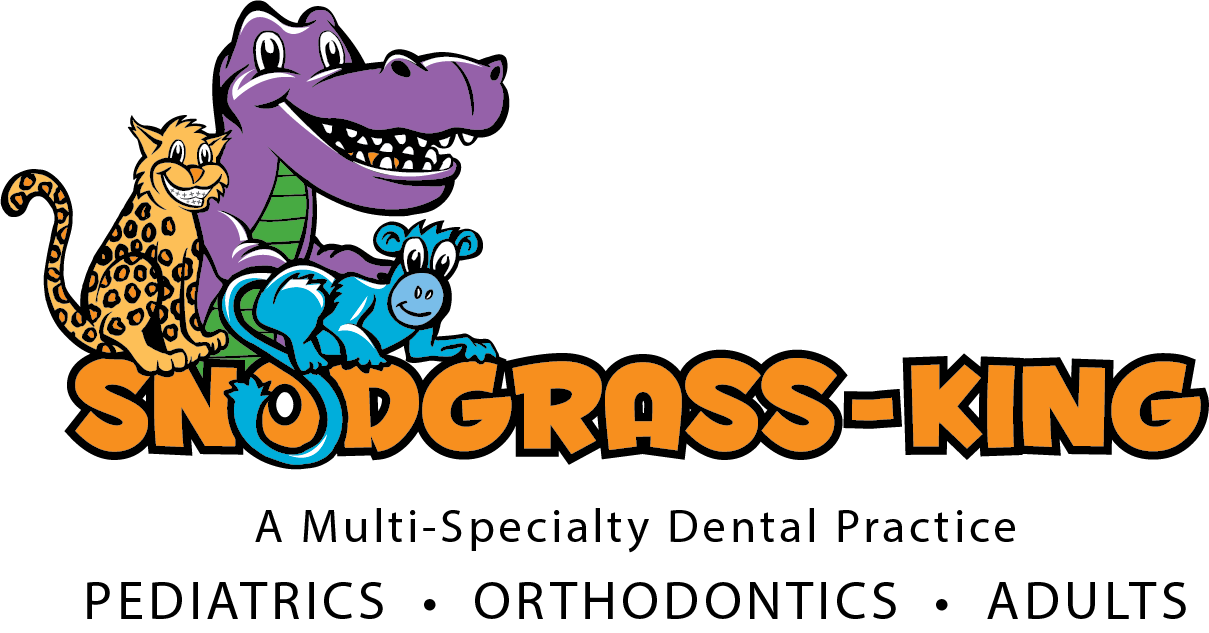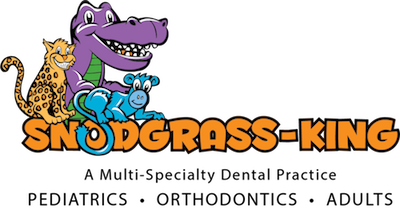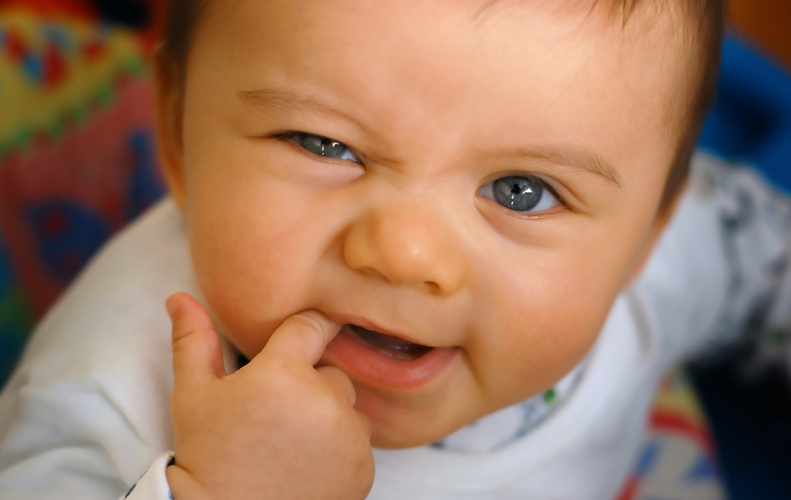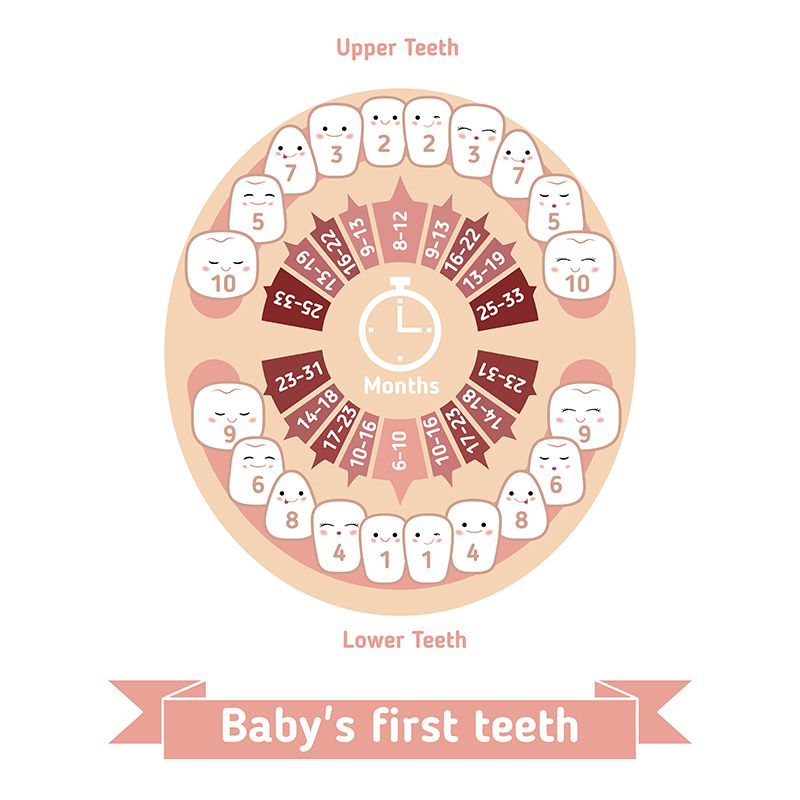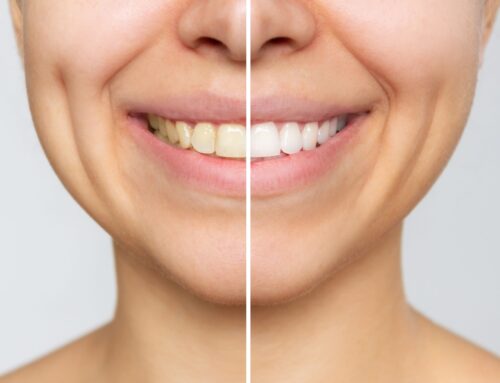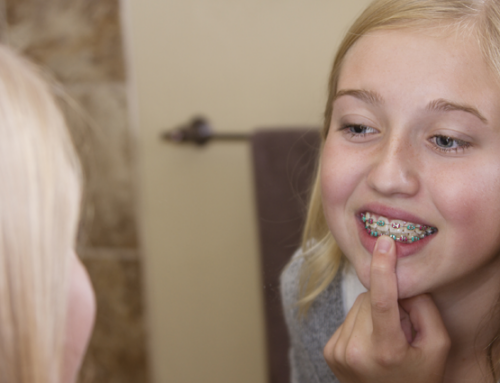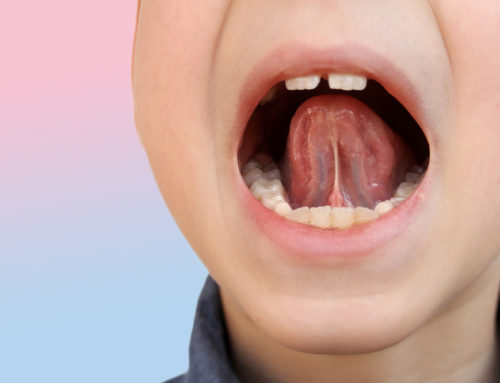Survive Baby Teething | 5 Tips
Fevers, sleepless nights, and fits: these types of pain sound like teething! But don’t worry; we have tips from our pediatric dentist to help you and your little one survive baby teething. While uncomfortable, there are ways to make teething easier for your baby and you.
Teething is a time when parents can expect their newborn to be grouchy, irritable, and sleepless! Here is everything you need to know about the process for teething newborns.
What to Look For When Baby Starts Teething
First, you need to understand the signs, symptoms, and what to expect when sets of teeth begin to come in. Drooling and acute pain from baby teething may start as early as 3-4 months, but teeth won’t come in until 6-8 months or as late as 12-14 months.
Every baby is different, but generally teeth appear in pairs, and it’s usually the front teeth. The bottom set usually appears first, followed by the matching pair on top.
Be on the lookout for drooling, redness on cheeks or chin, irritability, difficulty sleeping, grabbing ears, biting/chewing/sucking, and turning away food. Be careful not to blame teething for other symptoms such as diarrhea, runny nose, or high temperature. If you notice these symptoms that last longer than 24 hours, you should contact your pediatrician.
Do not be alarmed if your baby’s forehead feels hotter than usual. A slight rise in body temperature is normal for teething babies; however, any temperature over 100.4 degrees is a true fever not caused by teething. You should take your baby to a pediatrician if they break out in a true fever since it is typically a sign of an illness or infection that needs treatment.
When Does Teething Start?
Babies are born with all 20 teeth below their gum line. For newborns, teething typically happens between 6 and 24 months. The teeth usually come in pairs. The middle two teeth at the bottom are usually the first to come in followed by the middle two teeth at the top or vice versa. Children usually have their full set of baby teeth by age three.
Understanding the Teething Timeline
The duration of the teething process can vary widely. For some babies, it may last just a few days, while for others, it can stretch over several months. Each child experiences teething differently, and the discomfort generally eases once a tooth emerges through the gums. Teething typically hurts the worst right before a tooth breaks through the gums, with pain lasting a few days before and after a tooth arrives.
While teething generally follows a pattern, the timing and experience can differ. After the initial teeth appear, there is often a break before the next set arrives, though the interval can differ greatly from child to child.
This variability is important to keep in mind. With each tooth’s arrival, there might be a new wave of symptoms, but relief is usually around the corner once the tooth breaks through. Understanding this can help parents manage expectations and provide comfort to their little ones during this natural phase of development.
For most teething children, it is most painful when each set of molars are coming in. Since molars are the largest teeth, they will hurt worse, and it doesn’t help that they come in two different phases. Some parents notice that typical soothing methods cannot keep up with the discomfort during the second round of molars, but you can try new relief methods or talk to a pediatric dentist for advice.
Here is an average timeline of how the teeth typically grow in:
- 6 months: lower central incisors
- 8 months: upper central incisors
- 10 months: lower and upper lateral incisors
- 14 months: first molars
- 18 months: canines
- 24 months: second molars
Depending on the baby, the teething process can be easy or excruciating, but even in minor cases, most babies show some teething symptoms.
Teething Symptoms
It’s pretty easy to see when your baby’s teeth are starting to erupt from the gum line. The tricky thing is teething symptoms can start 2-3 months before a tooth begins to emerge!
Here are the symptoms you can keep an eye out for so that you can take the proper steps to make this process as comfortable as you can for your newborn.
- Irritability, especially at night – Most of your baby’s development happens when they are sleeping. Tooth eruption, when the tooth moves through the bone and gum, happens in stages, with more activity at night. This discomfort may cause your baby to wake up several times throughout the night.
- Excessive Drooling – Although drooling is a normal developmental stage of infancy, drooling in excess can also be a result of your baby teething. Your baby’s body begins to create extra saliva to lubricate the tender and bulging gum.
- Puffy Gums – Before your baby’s teeth start to poke out, it can cause the area of the gum to become red, swollen, and even bruised-looking. Sometimes, you can faintly see the tooth under the skin.
- Biting – The pressure of the tooth coming in from beneath the gums can be relieved by counter pressure. This will cause your baby to have a need to bite things.
- Decrease in Appetite – Usually, when babies are in pain, they lose their appetite, especially if it triggers spots that are sore.
Keep an eye out for these symptoms and it will help you take care of your baby’s teeth when they come in.
- Irregular Teething Symptoms
- Body Rashes
- Diarrhea
- Fever
- Vomiting
- Coughing
- Congestion
What Can I Do to Ease My Baby’s Teething Pain (5 Steps)
Teething can be a frustrating time for parents, especially when you don’t know how to relieve your child’s teething pain. Sometimes you try a method recommended by a friend or family member and it just doesn’t seem to be working. Thankfully there are multiple methods you can try to soothe your child’s gums, including:
What NOT to Do to Ease Teething Pain
Though some teething pain remedies may be popular, they may not be safe for your baby. So we advise you to avoid these remedies to keep your baby safe and healthy.
When to Take Your Toddler to the Dentist
Teething is an important sign. We recommend that after six months of your child’s first tooth coming in, you should bring them in to see a pediatric dentist. However, every child grows at different rates. Therefore, if they turn one year old and it hasn’t been six months yet, you should still bring them in.
We hope these tips have helped, and we look forward to serving you at Snodgrass & King Pediatric Dentistry at one of our Middle Tennessee (Mt. Juliet, Murfreesboro, Spring Hill, Franklin and Cool Springs) offices near you.
When to Brush Baby Teeth and Visit Dentist
Now that your baby has teeth, how do you take care of them? As soon as your baby’s first tooth grows in, you should start to brush twice a day. Especially brush your baby’s teeth after the last drink or meal of the day to prevent tooth decay.
How to Brush Your Child’s Teeth
Use a baby toothbrush with small bristles and brush with water. Don’t brush your child’s milk teeth with toothpaste because babies tend to swallow toothpaste. Fluoride toothpaste could cause them to have a bad stomach ache! When your child turns 2, you can apply an amount of toothpaste as small as a grain of rice.
When your child is three years old, you can move them up to a kid-sized toothbrush with small bristles and a thick handle they can easily hold. Add a pea-sized amount of toothpaste to brush their teeth. Teach your child to spit out the excess toothpaste when they can, but assist them with applying toothpaste until they are about 6.
You need to monitor and help your child brush their teeth until they are about 7 or 8 years old. Gauge their ability to brush on their own by seeing how well they can write their name; this will tell you if they can hold a toothbrush and brush their teeth well.
First Dentist Visit
Take your baby to a local pediatric dentist as soon as their first tooth appears or when they have their first birthday, whichever happens first. Since they have only one tooth, the first dental exam won’t require much interaction. Instead, the visits establish a relationship between your child, the staff, and the dentist. Early visits also help alleviate fears of the dentist as the child grows older.
Plus, the dentist and staff can monitor your baby’s tooth growth to prevent problems like gum disease, cavities, and more before they become big problems.
Pediatric Dentists at Snodgrass & King in Middle Tennessee
If you are looking for a pediatric dentist in the greater Nashville area, then visit us at Snodgrass-King Dental! Serving Franklin, Spring Hill, Mt. Juliet, and Murfreesboro you’re sure to find the location right for you and your family. We care for your child’s dental health, from baby to wisdom teeth!
Starting dental care from only a few months of age can prevent chronic pain, gum disease, cavities, and many dental ailments. Look out for Chomp! Your child may even see Chomp, the friendly, purple alligator, during their dental visit.
